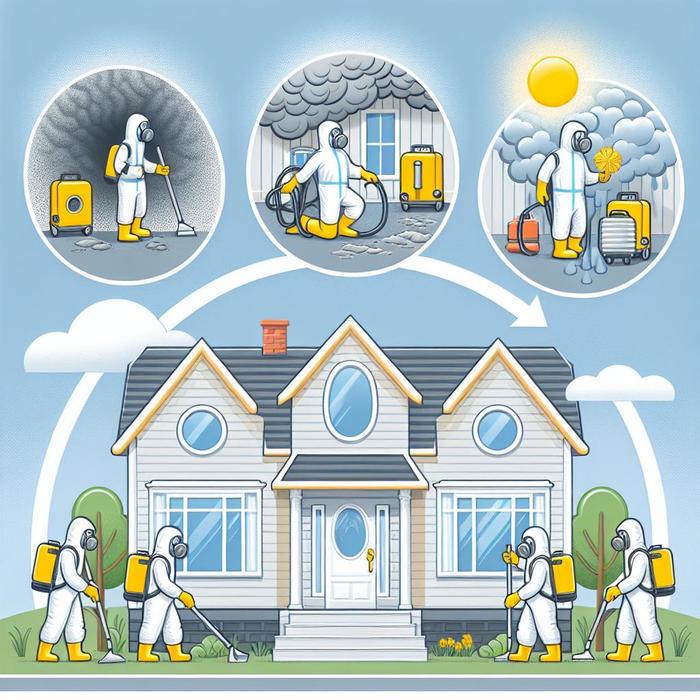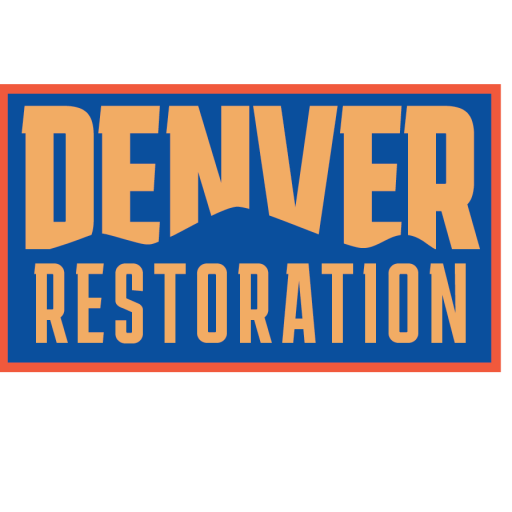Understanding Mold Remediation
Mold is a common issue that many homeowners, property managers, and business owners face. It is not merely an aesthetic concern; it has the potential to adversely affect air quality and instigate health risks if not properly addressed. The dire need for clean air at home or in the workplace inherently calls for an effective mold remediation process.
Why is Mold Remediation of Paramount Importance?
Simply put, mold remediation is the process of controlling mold growth and reducing mold spores in the indoor environment to normal levels. This is vital for maintaining air safety and ensuring the well-being of the people in the vicinity. Besides clearing visible mold, remediation also involves fixing underlying issues leading to moisture build-up, as these are what mold spores thrive on.
The gravity of the mold problem and its potential health implications underscore the importance of remediation, especially in the aftermath of damage from fire or water. Mold spores can exacerbate allergic reactions, cause respiratory issues, and other health problems if left unchecked.
The Environmental Protection Agency notes that the severity of these health effects can range from mildly irritating to serious, depending on the type of mold present and the individual’s health condition.
Ensuring Air Safety Post Mold Remediation
Post mold remediation, it is crucial to secure air safety both during and after the process. The remediation process, when handled by professionals, employs controlled conditions that suppress mold spores from dispersing into the air.
However, the scenario post-remediation also requires close monitoring to ensure no residual spores are getting released into the breathable atmosphere. The importance of comprehensive mold remediation services cannot be overstated in this regard, as they ensure thorough sterilization, deodorization, and sanitization measures.
Steps to Maintain Clean Air at Home Post Remediation
Ensuring clean air at home after mold remediation is not a one-time event but rather a proactive ongoing process. Below are a few pointers:
- Regular Inspection and Maintenance: Regular monitoring of susceptible areas in your home or business premises can prevent mold relapse. Regular maintenance of HVAC systems, plumbing, and other possible areas where humidity can accumulate goes a long way.
- Air Quality Checks: Regular air quality checks can identify any possible mold spores in the air and ensure continual clean air at home.
- Use of Air Purifiers: High-efficiency air purifiers can capture mold spores and prevent them from circulating in the air. For instance, air purifiers with a HEPA filter are quite effective at trapping mold spores.
Partner With Professionals for Air Safety
Mold remediation is a task best left to the experts. Professionals equipped with the right training, tools, and experience can ensure comprehensive remediation and maintenance of air safety post remediation. They further can guide you on robust damage restorההation procedures, which are paramount to counter any recurrent mold and its potential threats.
Key Takeaway
Mold remediation is not just about getting rid of visible mold – it is about restoring the indoor environment to its safe and healthy state. The path to clean air at home is through a thorough remediation process and proactive measures to maintain that cleanliness. Making educated choices in terms of the right remediation services provider is crucial in ensuring long-term air safety and health for you and your loved ones.
Remember, we invest in our homes and workplaces not just for shelter but also for a safe, healthy living environment. Don’t let mold compromise this. Be proactive about air safety and embrace the comprehensive solutions that come with professional mold remediation.
Recognizing Mold Infestation
Mold infestation is often seen as merely a cosmetic problem, yet it is much more. Mold can eat away at your property, causing gradual structural damage. Plus, the fact that its presence significantly affects indoor air quality and poses potential health hazards is a concern.
Not all types of molds are hazardous, but they can potentially cause problems like allergic reactions, respiratory tract infections, asthma symptoms, and more, particularly in individuals with weak immune systems or existing health conditions.
Black mold, for instance, is one of the most hazardous types. Often noticeable due to its characteristic black or greenish color and musty odor, it poses significant health risks. Homeowners, especially those dealing with water damage, should be vigilant about black mold infestation and act swiftly if detected.
The Florida Department of Health elaborates on the different types of molds and associated health risks, helping homeowners to better identify and understand their potential threats.
An Overview of the Mold Remediation Process
Mold remediation is a multi-step process aimed at removing the presence of mold and fixing the underlying issues that lead to its growth. Restoration companies usually follow a well defined protocol that ensures maximum effectiveness while adhering to safety standards.
Initial Assessment: The remediation process begins with a detailed examination to study the spread and level of mold infestation. This stage often involves testing samples in a lab to ascertain the type of mold and the best remediation strategies.
Containment: The affected area is cordoned off to prevent the mold from spreading to other parts of the property during remediation.
Removal: Professionals use specialized tools and procedures to remove mold colonies from surfaces.
Dehumidification and Drying: Any residual moisture and humidity, the primary culprits behind mold growth, are removed using dehumidifiers and air movers.
Cleaning and Sanitizing: Thorough cleaning and sanitizing ensure that no mold spores are left behind.
Restoration: Any parts of the property that were removed or damaged during the remediation process are restored back to their original condition.
Companies offering damage restoration services often provide mold remediation given its typical association with water damage.
Maintaining Your Property Free of Mold
Once mold remediation is complete, ongoing efforts are necessary to prevent further infestation. Despite living in an environment where mold spores naturally exist, implementing proactive measures can keep mold problems at bay.
Maintaining Moisture Control: The key to preventing mold growth is moisture control. Be it a leaking pipe, seeping walls, or high humidity, all moisture issues must be addressed promptly.
Proper Ventilation: Ensure that areas like bathrooms, kitchens, and basements are well ventilated as these are usually the most moisture-prone areas in a house.
Periodic Maintenance and Inspection: Regular maintenance of your property allows early detection of mold-prone areas, helping prevent extensive damage. Securing your property with such preventive measures becomes an essential part of homeownership.
Choosing the Right Restoration Service
Given the potential health hazards and property damage, professional treatment might be your safest bet for mold remediation. But how do you choose the right restoration service?
Experience: Years of industry experience signify proficiency. Seasoned professionals are typically backed by extensive field experience and comprehensive knowledge in adopting the most effective remediation measures.
Qualified and Trained Technicians: Remediation is a task that demands specific technical skills. Make sure the team consists of qualified and trained technicians who adhere to the industry’s safety and quality standards.
Advanced Equipment: The effectiveness of remediation heavily relies on the equipment used. Leading restoration services invest in high-grade, advanced tools for ensuring the most thorough and effective treatment.
Insurance Assistance: Dealing with insurance can be overwhelming. Some restoration services offer to deal with insurance companies directly, making the claim process less stressful for homeowners.
24/7 Availability: Immediate action is crucial in limiting mold damage. Look for services that offer round-the-clock assistance, responding promptly to your call for help.
Persistent vigilance coupled with periodic expert assistance is key to maintaining a mold-free environment. Whether it’s a minor outbreak or an extensive infestation, it’s critical not to overlook this stubborn element that can potentially degrade your property’s integrity and indoor air quality. Be vigilant, stay informed, and make conscious decisions about professional mold remediation to secure the safety of your home and loved ones.

